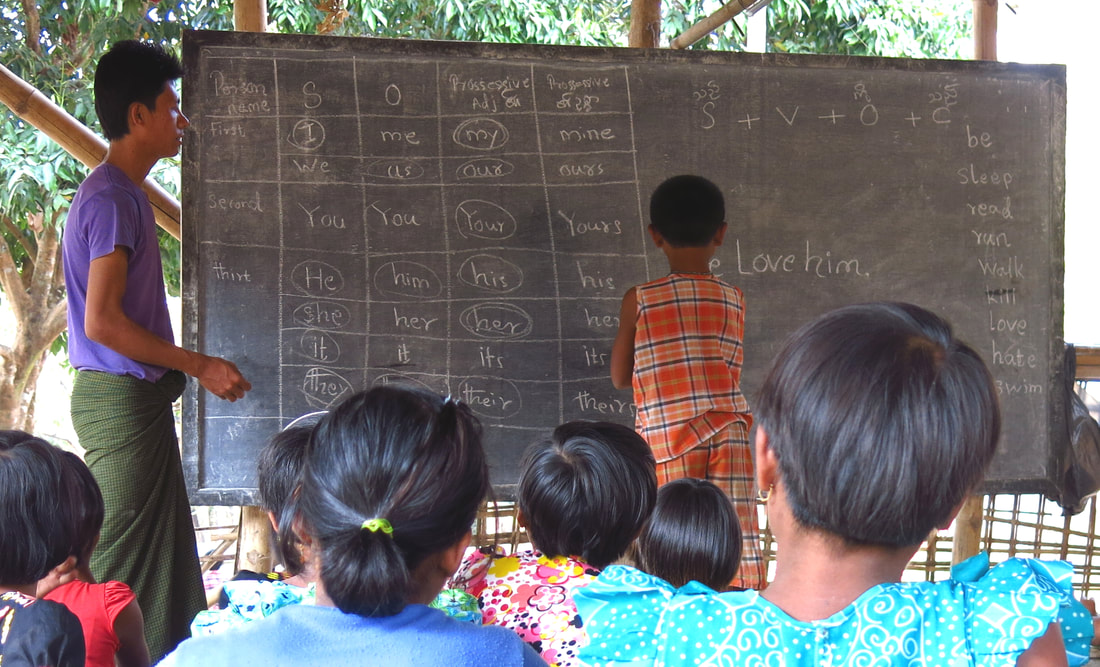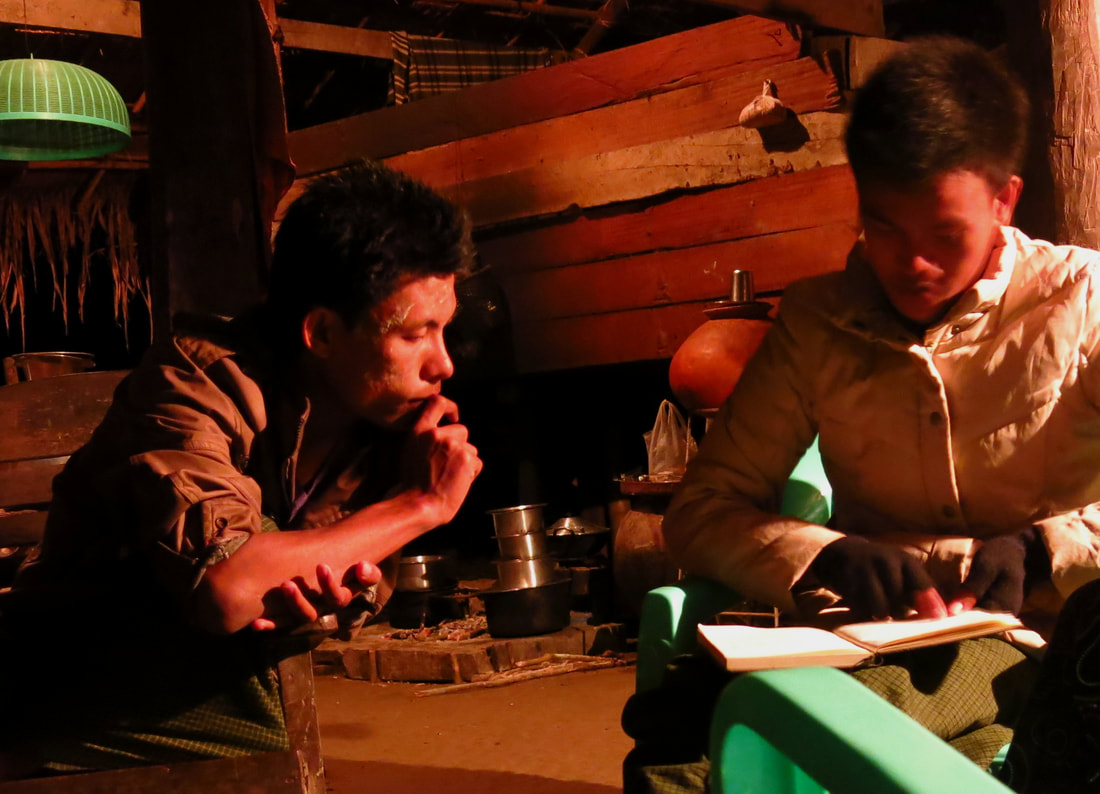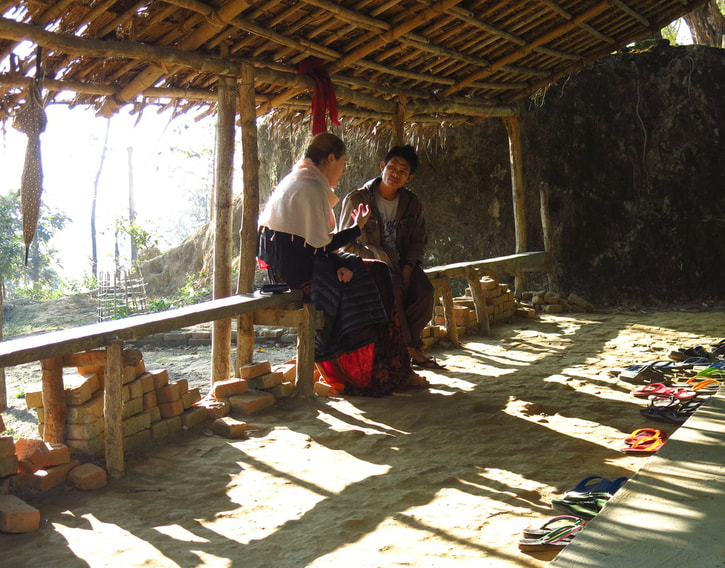|
This is the teacher whom I believe had the most raw, natural talent. He is gentle and patient with the students. He is calm and has a manner which soothes over-excited little ones. He is sensitive and empathic. However, something needs to change. The class was very teacher-led with a good deal of chanting. Not what I like to see in a classroom. There was no stick though with which to beat the children. This is of course a categorically good thing. Van was scared by the presence of a stick-welding fanatic that she glanced in the assembly hall during our Thanlyin teacher training. Upon the board was a neatly scribed table of subject, object and the possessive. The writing was white and clear. The students were individually called on to come to the board and make a sentence in which the verb must agree with the subject and an object must be apparent. Any sentences which were incorrect were left on the board and other students were subsequently invited to come and change anything which was incorrect. I liked this activity a lot, and especially appreciated when a sentence was corrected by a total of 4 children. The more trial and error, the more the students learn. After a teacher-led but pretty calm and successful lesson, Van and I gave feedback to our second trainee. The next day we returned to a disappointing scene. The lesson was very similar; with no corrections based on the feedback and with more screaming in unison. At one point, some of the children were even covering their ears to prepare for the onslaught of yelling. They had been placed into three groups and set to work on creating one of three sentences: question, negative and affirmative. In place of assigning a leader or jigsawing the groups, all of the members simply hollered the answer; each trying to compete to be the loudest. We are learning that the teacher’s English is simply not sufficient for us to be able to give feedback in English and that our other trainee needs to translate for us for the feedback to be effective. It is a steep learning curve for us all; Van enjoys feedback and constructive criticism and feels it should be done as soon as the activity is over so that the information is still fresh. I understand this feeling; while I agree that keeping it fresh is important, I also feel that the second trainee has a delicate disposition. It is this disposition which makes him a natural teacher, but which makes him vulnerable to too much feedback. He arrived at the house after we had eaten our lunch and before we washed. Gauging the atmosphere and feeling of the two young teachers is a fine art. We felt that some feedback could be tolerated so we plunged in; showing videos and explaining the accompanying feelings. The problem is that he seems to take feedback personally; he is something of a burden to his large family and he has been trained to feel like his thoughts do not matter and he is a waste unless he is working and bringing in income. We must progress slowly so that we don’t do more harm than good. Feedback needs to be handled carefully where this gentle soul is concerned as too much negativity will be seen as personal and might break his shy, isolated spirit.
Chloe Smith NEH Coordinator and Teacher Trainer Related Posts: Observing Teacher Training Observing Students in Class Observing Grade 8 English Observing the Monk's Class Observing a Student-Run Lesson Observing Grade Level Math at REC Observing an English Lesson and Fixing the Curriculum Observing Teachers
Comments
|
This section will not be visible in live published website. Below are your current settings: Current Number Of Columns are = 3 Expand Posts Area = 1 Gap/Space Between Posts = 20px Blog Post Style = card Use of custom card colors instead of default colors = Blog Post Card Background Color = current color Blog Post Card Shadow Color = current color Blog Post Card Border Color = current color Publish the website and visit your blog page to see the results |
|
© New Education Highway 2024
Except where otherwise noted, content on this site is licensed under a Creative Commons Attribution 4.0 International License. |




